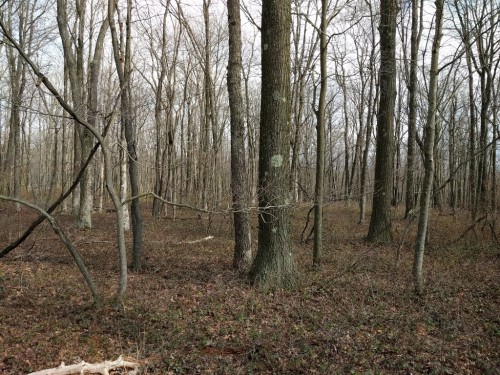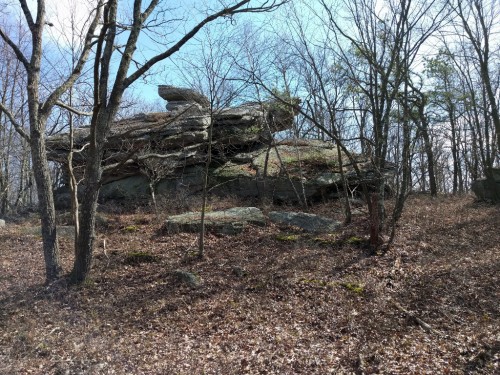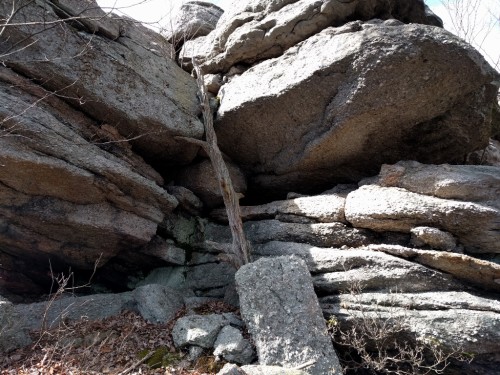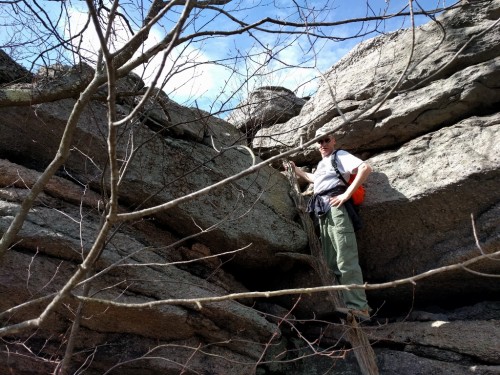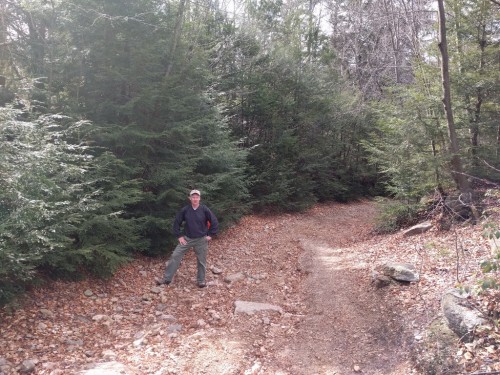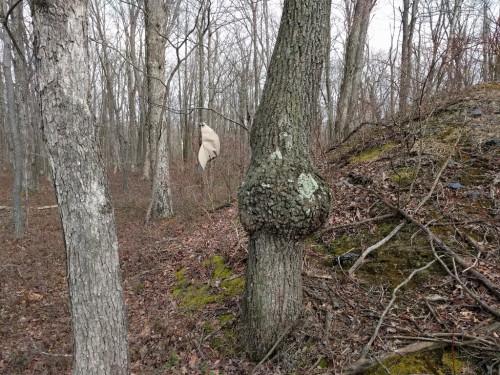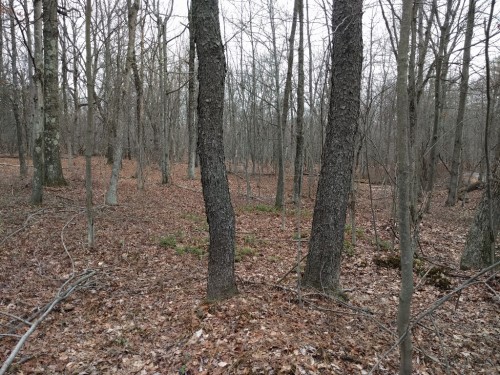My brother John and I took advantage of an unseasonably warm mid-March day to go for a nice long hike in the woods near where we grew up in the mountains of eastern PA. As I am wont to do, I found myself examining various trees along the way, identifying them by species, considering why certain trees are growing where they are, assessing their potential for woodworking projects, and just appreciating looking at them. Not to go all Thoreau on you, but there is definitely something soul-satisfying about walking through the woods. I just wish I could do it more often.
Many of the trees in these woods are White and Black oak. There’s a mixture of both in the photo below. Another very common tree is the Red maple, found at both low and high elevations. As you may know, Red maple is softer than the hard maples typically used for furniture construction but it is also less expensive and easier to work. It can be used in applications where a wood of moderate hardness is desired, often as a substitute for hard maple. Did you know that Red maple has roughly the same hardness as Black cherry?
The trees in this area, as in many other areas of Pennsylvania, have grown a lot since I was a kid. The large rock in the photo below, locally known as the “Mile Rock”, sits on top of a mountain and was once a dominant land mark, visible from miles away because it towered above the surrounding scrubby trees. Now many of the trees are taller than the Mile Rock, making it almost impossible to see from a distance, especially when the leaves are out. Now, it’s more like the “quarter-mile rock”.
Access to the top of the Mile Rock is via a natural tree ladder that someone rigged up a long time ago. I’m fairly certain this same ladder was in place back in the 1970’s. The impressive thing is that the wood is still solid with no obvious signs of decay. I believe it is made from Chestnut oak which is very decay-resistant and commonly found along mountain ridges like this. The two relatively large trees in the foreground of the photo above are Chestnut oak. This species is easily identified by its deeply ridged bark and stubby branches. Its leaves resemble those of the Chestnut tree, hence its name. I’ve never worked with Chestnut oak but it reportedly has similar properties as white oak but it is a little darker in color and coarser-grained. I think I need to make something from this wood…
Here’s proof that the tree ladder is able to support a person. I’m not sure OSHA would approve this apparatus but it certainly has stood the test of time.
On the way back, we came across a grove of young Eastern hemlock trees. This species prefers moist, shady areas and is often found near streams and rivers. Indeed, there is a small creek on the other side of the hemlocks. White pine is another common evergreen in these parts. It also seems to prefer moist areas but I’ve encountered many a white pine growing on a mountain-side far from any water source. Sometimes I’ll come across a single white pine growing among other species and wonder how it got there. Squirrels?
One of the more interesting trees was this one with the burl near the base. I plan to keep an eye on this tree – just in case I ever get into bowl turning. I’m not sure of the species but I think it may be Tupelo, aka, Black gum. I’ll know for sure when it leafs out.
Towards the end of the hike, I came across a couple Black cherry trees growing in a relatively flat, well-drained area. This is a typical environment for this species. I’ve noticed that, at least in my old stomping grounds, Black cherry tends to occur somewhat sporadically – a few trees here and there, but very seldom an entire grove of them. Perhaps they are out-competed by the oaks and maples in the rocky soil?
I really enjoyed my walk in the woods.


